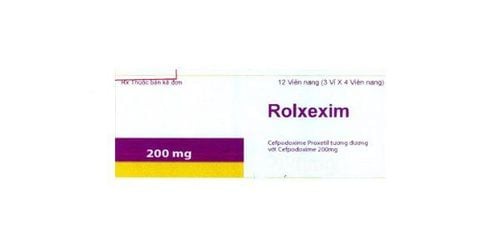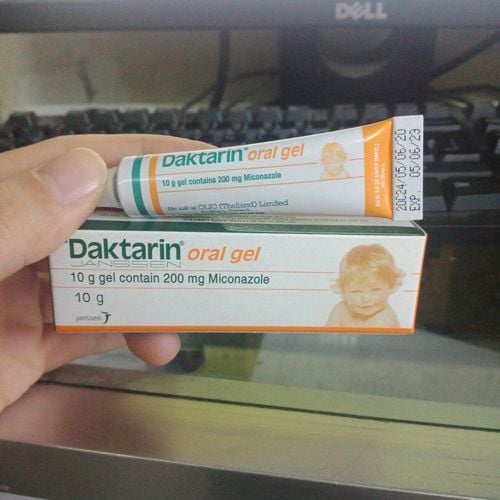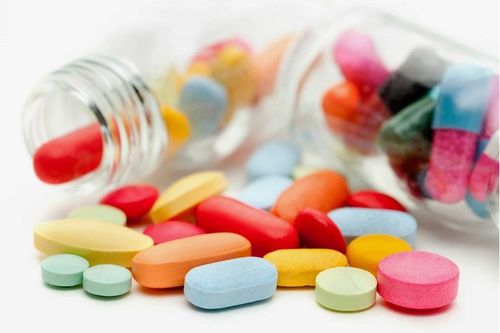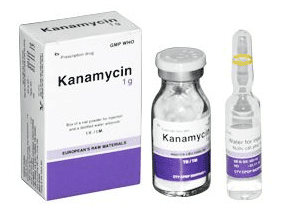This is an automatically translated article.
Kefodime 100mg drug is prepared in the form of water-dispersible tablets, with the main ingredient being Cefpodoxime Proxetil. The drug is used in the treatment of bacterial infections caused by many strains of gram-negative and gram-positive bacteria. To ensure effective use and avoid unwanted side effects, patients need to strictly follow the instructions of the doctor, professional pharmacist.
1. What is Kefodime 100mg?
Kefodime 100 medicine has the main ingredient is Cefpodoxime Proxetil (100mg Cefpodoxime). Cefpodoxime Proxetil is a prodrug, administered orally, that is reduced by esterases in the intestinal wall to release Cefpodoxime – a 3rd generation cephalosporin. Cefpodoxime is a bactericidal agent, acting by an effect on membrane synthesis. bacterial cells. Specifically, Cefpodoxime binds strongly to penicillin-binding proteins located in the bacterial cell wall. From there, it disrupts the synthesis of peptidoglycan, causing the bacterial cell wall to weaken, the cell to swell and burst. Cefpodoxime is active against a broad spectrum of gram-negative and gram-positive bacteria.
Indications for use of Kefodime 100mg: Treatment of mild to moderate infections caused by susceptible strains of bacteria such as:
Upper respiratory tract infections: Sinusitis, acute otitis media, pharyngitis and tonsillitis. ; Community-acquired pneumonia ; Uncomplicated acute gonococcal infection; Uncomplicated urinary tract infections; Skin infections, skin structure. Contraindications to the use of Kefodime 100mg:
Patients with hypersensitivity to Cefpodoxime or other cephalosporin antibiotics.
2. How to use and dose of Kefodime 100mg
How to use: Put Kefodime 100mg water-dispersible tablets into a small glass of water containing about 5ml of drinking water, gently stir until the tablet dissolves before taking. Kefodime tablets should not be broken or chewed.
Dosage:
Upper respiratory tract infections (especially for tonsillitis, pharyngitis, only for chronic, recurrent infections, resistant to other antibacterial drugs): Adults use a dose of 100mg / time x 2 times / day (can be used at a dose of 200mg / time x 2 times / day if sinusitis). Children from 9 years of age and older use a dose of 100mg/time, once every 12 hours; Lower respiratory tract infections (including pneumonia and bronchitis): Adult dose 100-200mg / time x 2 times / day. Children from 9 years of age and older use a dose of 100mg/time, once every 12 hours; Skin and soft tissue infections: Adults use a dose of 200mg/time x 2 times/day. Children from 9 years of age and older use a dose of 100mg/time, once every 12 hours; Uncomplicated urinary tract infections: Adults use 100mg/time x 2 times/day (in case of uncomplicated upper urinary tract infection, use 200mg/time x 2 times/day). Children from 9 years of age and older use a dose of 100mg/time, once every 12 hours; Uncomplicated gonorrhea: Adults take a single dose of 200mg. Dosage with other subjects:
Patients with renal failure (creatinine clearance less than 30ml/min): The interval between doses should be increased to 24 hours; Patients with cirrhosis: No dose adjustment is required. Overdose: When using an overdose of Kefodime, patients may experience symptoms such as nausea, vomiting, diarrhea, epigastric pain. In case of severe reactions due to drug toxicity when overdosed, the patient may be prescribed hemodialysis or peritoneal dialysis to remove Cefpodoxime from the body (especially in the case of patients with impaired renal function).
3. Side effects of Kefodime 100mg
When using Kefodime 100mg, patients may experience some side effects such as diarrhea, nausea, vomiting, headache, dizziness, colitis, abdominal bloating, allergic reactions (itchy skin, etc.) redness, urticaria), thrombocytopenia, leukopenia, thrombocytopenia, eosinophilia,... Patients should inform their doctor if they experience side effects due to taking the drug to receive advice. appropriate consultation and intervention.
4. Be careful when using Kefodime 100mg
Some notes that patients need to remember before and while taking Kefodime 100mg include:
For patients with temporary or long-term decreased diuresis due to kidney failure, the total dose of Cefpodoxime Proxetil used during the day needs to be reduced. The reason is that in these patients, the serum antibiotic concentration is maintained at high values long after taking the drug at the usual dose; Cefpodoxime should be used with caution in patients taking concomitant diuretics; Long-term use of Cefpodoxime may facilitate the growth of bacteria that are not sensitive to the drug. With this antibiotic, the normal intestinal flora will be affected, creating opportunities for Clostridia growth, leading to the risk of pseudomembranous colitis. Therefore, it is necessary to regularly monitor the patient's health when superinfection occurs. At the same time, there should be an appropriate treatment solution in this case; The effectiveness and safety of Kefodime have not been clearly established when used in children under 15 days of age, so the drug should not be used for this group of people; There is no need to adjust the dose of Kefodime in elderly patients with normal renal function; There are no appropriate studies with the use of Cefpodoxime Proxetil in pregnant women. Therefore, the drug should be used in pregnant women only if necessary, as prescribed by the doctor on the basis of a balance of benefits and risks; Cefpodoxime Proxetil is excreted in milk, causing serious reactions in nursing infants. Therefore, the mother may choose to discontinue breastfeeding or discontinue the drug based on the importance of the drug to the mother (in consultation with the physician); The effects of Cefpodoxime on the ability to drive and use machines have not been studied. However, because the drug can cause side effects such as dizziness and lightheadedness, when these signs appear, patients should not drive or operate machinery.
5. Drug interactions Kefodime 100mg
Some drug interactions of Kefodime 100mg include:
Concomitant use of Kefodime with high-dose antacids (aluminum hydroxide, sodium hydrocarbonate) or with H2-receptor blockers will reduce the polar value. plasma drug concentration, reducing the amount of drug absorbed. However, the rate of drug absorption was not affected by this combination; Concomitant administration of Kefodime with oral anticholinergics (eg, propantheline) resulted in delayed maximal plasma concentrations, but absorption was not affected; Concomitant use of Kefodime with Probenecid will inhibit the renal excretion of Cefpodoxime, leading to an increased amount of drug absorption, increasing the maximum concentration of Cefpodoxime in plasma; Although the use of Cefpodoxime Proxetil alone does not cause nephrotoxicity, patients should be closely monitored for renal function when taking the drug concomitantly with drugs that can cause nephrotoxicity; Cefpodoxime may affect the results of a Coombs test. When using Kefodime 100mg, patients should absolutely follow all instructions of their doctor during treatment. This helps to improve the effectiveness of treatment and avoid some dangerous incidents and side effects.
In summary, Kefodime 100mg is formulated as a water-dispersible tablet, with the main ingredient being Cefpodoxime Proxetil. The drug is used in the treatment of bacterial infections caused by many strains of gram-negative and gram-positive bacteria. To ensure effective use and avoid unwanted side effects, patients need to strictly follow the instructions of the doctor, professional pharmacist.
Follow Vinmec International General Hospital website to get more health, nutrition and beauty information to protect the health of yourself and your loved ones in your family.
Please dial HOTLINE for more information or register for an appointment HERE. Download MyVinmec app to make appointments faster and to manage your bookings easily.













